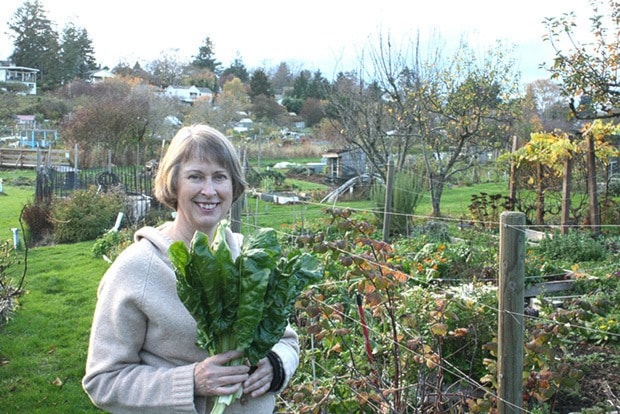Almost a third of respondents spend anywhere between a quarter and a half of their household income on food, according to a survey by the District of Saanich.
The survey is not statistically significant, but raises questions about food affordability in Saanich.
According to Statistics Canada’s Survey of Household Spending, average Canadian households spent $7,980 on food — or about 13.6 per cent of their total spending.
According to Saanich’s survey, 28.1 per cent of respondents – 78 out of 278 – said they “approximately” spent anywhere between 25 and 50 per cent of their household income on food.
Colleen Hobson, executive director of Saanich Neighbourhood Place, a resource centre for families that includes a community kitchen in offering resources around food security, says these numbers did not surprise her.
“It was quite shocking,” she said. “That’s a huge percentage.”
The survey’s findings are broadly consistant with recent figures tracking food prices. While the overall cost of food remained flat in September 2016 compared to the same time the previous year, the grocery store prices of several items, especially fresh vegetables and fruit, have risen by double-digit figures thanks to Canada’s weak currency, rising transportation costs and weather events.
Local concerns about food prices in turn add to worries about Greater Victoria’s affordability in light of its tight, expensive housing market.
“If people are paying that much for food and the going rate of housing, there is not a lot of left,” said Hobson.
The rising cost of food coupled with high housing costs also forces individuals to buy cheaper but unhealthier food, she added.
“Until food becomes less expensive or housing more affordable, the nutritional choices are limited,” she said.
The finding about the cost of food emerged out of a participatory survey that the district commissioned as part of its Agricultural and Food Security Plan.
Scheduled for completion in early 2017, the plan sets out to “establish an understanding of local agriculture and food security vision and goals,” identify “gaps in agriculture and food security policy and practice in Saanich,” and develop “options for the future direction that Saanich should take in supporting Saanich agriculture and food security.”
Cam Scott, manager of community planning with the District of Saanich, said the district included the question to look for “potential indicators” of food insecurity.
But he says it is too early to draw any conclusion about Saanich’s state of food security from these findings, adding that they represent just one piece of information that needs to be weighed against other findings. They and other findings will serve as starting points for future conversations with community stakeholders leading towards future actions, he said.
Mary Wolfe, who gardens at Capital City Allotment, says food security is a big issue for her, noting that she grows anywhere between 70 and 80 per cent of the vegetables that she consumes annually.
This figure, she says, makes up a “significant” share of her total annual food consumption. “If I don’t grow it, mostly, I don’t eat it.”
Joanne Thomson, who also farms a plot in the Capital City Allotment Garden, says individuals can make a “good start” towards improving food security by growing and canning their own food, adding that it is “fairly easy” for individuals to start growing their own food.
“It is a lot of work, and people say, why are doing it?” she says. “But it is also an absolute pleasure.”
